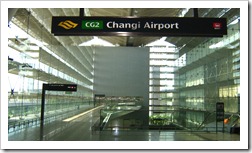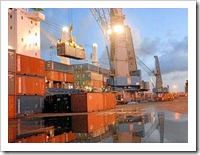1. Changi Airport
Number of passengers per year: 37.2 million
Last year's ranking: 3
Awards: Best Airport to Leisure Facilities (# 1), Best Airport Immigration Services (# 3), Best Airport Shopping (# 3), Best International Transit Airport (# 2), and Best Airport Dining (# 2)
Changi Airport serve passengers more than 200 goals more than 90 international airlines. Changi also handles approximately 5,000 arriving and departing each week.
2. Incheon Airport
Number of passengers per year: 18.7 million
Last year's ranking: 1
Awards: Best International Airport Transit (# 1), Asia Airport Staff Excellence (# 1), Airport with Best Leisure Facilities (# 2), Airport with Best Security Management (# 2), Airport with Best Cleaning (# 2), and Airport with the Best Toilet (# 2).
Incheon is the largest airport in South Korea. The airport serves more than 70 passenger airlines. Not only serve the passengers, the airport also has a museum of Korean culture.
3. Hong Kong International Airport
The number of passengers per year: 45.5 million
Last year's ranking: 2
Awards: Best Airport Toilet (# 1) and Best Airport Dining (# 1)
Hong Kong Airport is the busiest airport in the world. The airport is equipped with a nine-hole golf course that can be used by visitors as they pass the time waiting for planes.
4. Munich Airport
The number of passengers per year: 32.7
Rank last year: 5
Awards: Best Airport to Leisure Facilities (# 3), Best International Transit Airport (# 3), Best Airport Dining (# 3), and Europe Staff Service Excellence (# 2)
Munich is Germany's second busiest airport. Passengers enjoy the beauty of the terminal starting from the entrance gate. The airport was built in the urban landscape. Many walls and ceilings made of glass, so that the airport was great.
5. Kuala Lumpur Airport
The number of passengers per year: 29.7 million
Last year's ranking: 7
Awards: Best Airport Immigration Service (# 1) and the Airport Staff Excellence South East Asia (# 1)
Kuala Lumpur is located in Malaysia's southern corridor and one of the busiest airports in Asia. The main terminal remains green, because it is equipped with artificial forest. They use the concept, "airport in the forest, the forest at the airport."
6. Zurich Airport
The number of passengers per year: 12.3 million
Last year's ranking: 4
Awards: Best Baggage Delivery (# 1), Best Terminals Cleanliness (# 1), and Europe Staff Service Excellence (# 3)
Zurich Airport, Switzerland, lies 11 kilometers north of downtown Zurich. The airport has a porter service where tourists pay, and the porter will take your goods to final destination.
7. Schiphol Airport
The number of passengers per year: 43.6 million
Last year's ranking: 8
Awards: Best Airport Shopping (# 2)
Schiphol Airport in Amsterdam, the Netherlands, opened in 1916 as a military airfield, and now has turned into one of the busiest in the world. While waiting for departure, travelers can enjoy a massage and play poker at the casino.
8. Beijing International Airport
The number of passengers per year: 65.4 million
Last year's ranking: 17
Awards: Best Airport Security Processing (# 1), Best Airport Immigration Service (# 2), Best Airport Cleanliness (# 3), and Asia Staff Service Excellence (# 2)
Beijing Airport is the busiest airport in Asia and can accommodate up to 78 million passengers per year. Tallest building, the terminal 3, has a roof that was painted red, the Chinese luck color.
9. Auckland International Airport
The number of passengers per year: more than 13 million
Last year's ranking: 10
Awards: Airport Staff Excellence Australia / Pacific (# 1)
Auckland Airport, New Zealand, providing more than 20 international airlines, and serve 45 flights take off per hour.Aukland provide thousands of jobs through the second-largest cargo port in the country.
10. Suvarnabhumi Airport
The number of passengers per year: 40.5 million
Last year's ranking: 16
Awards: South East Asia Staff Service Excellence (# 3)
Suvarnabhumi was designed by architects Murphy/Jahn and opened in September 2006. The airport is ready to serve 74 flights per hour and 45 million passengers and three tons of cargo per year. There is a 600 room hotel located in front of the terminal.
Picture:google.com












